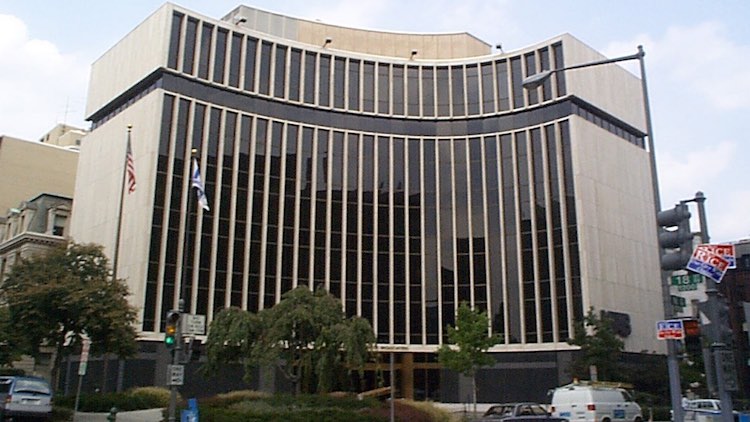NAB Makes Case for Next Gen Alerts

Broadcasters made their case on the Hill Wednesday for the importance of advanced emergency alerts via the new next gen ATSC 3.0 standard and the necessity for the FCC to approve NAB's request, along with noncommercial broadcasters and tech companies, to roll out the new standard on a voluntary basis.
That came at a hearing in the House Communications Subcommittee on the future of emergency alerts where broadcasters got plenty of plaudits for what they already do with their current ATSC 1.0 signals.
Subcommittee chairman Marsha Blackburn (R-Tenn.) called broadcast emergency alerts "the nation's primary alerting tool."
Ranking member Mike Doyle (D-Pa.) said he was happy to see a broadcaster representative on the panel—NAB CTO Sam Matheny.
"The commitment that broadcasters have had to emergency alerts and local reporting in times of emergency is commendable," he said. But while he said he was looking forward to the new possibilities of ATSC 3.0, he was concerned about the impact it could have on "working families." He said the last time there was such a transition, government partnered with industry to make sure people were informed and not unduly impacted by the change in technology. As with the last change, from analog to digital, ATSC 3.0 will require either a new set or a new add-on box.
In the DTV transition, the government subsidized those analog-to-digital tuners. Doyle said he wanted to make sure that no one would be left behind in this transition.
Blackburn said ATSC 3.0 "appears to offer capabilities that could bring significant improvements to emergency alerting."
The smarter way to stay on top of broadcasting and cable industry. Sign up below
Rep. Frank Pallone (D-N.J.), ranking member of the parent House Energy & Commerce Committee, suggested broadcasters went above and beyond just relaying emergency alerts, referencing a radio station in his home state—WRAT Point Pleasant, N.J.—that stayed on the air during Superstorm Sandy "to help reunite families and get people to safety."
Pallone said it was hard to overstate the importance of alerts, whether to warn of a hurricane or tornado or of an active shooter. He said that during Sandy, "radio and TV broadcasters played a crucial role in saving lives."
He said the role of broadcasting could not be overstated, which was why losing signals was not an option.
Pallone asked whether broadcasters would commit to making sure all their viewers, particularly the most vulnerable who could not afford a new TV, could still get a signal as broadcasters transitioned from ATSC 1.0 to 3.0. Matheny said broadcasters would simulcast, which was a "key idea," and he did not believe anyone would be disenfranchised. But broadcasters have told the FCC in recent comments that they don't think they need the FCC to mandate simulcasting.
Rep. Greg Walden (R-Ore.), chair of the parent Energy & Commerce Committee said he could say without fear of contradiction that he was the only E&C chair to have wired in an emergency alert system—he is a former radio station owner and operator and what he called a "faux engineer" on occasion. As such, he said, he was well aware of the importance of providing emergency communications.
Walden said federal policy should not inhibit technological advancement that allows "broadcasters and cablecasters" to notify the public.
Asked by chairman Blackburn whether NAB's position was still that it was not seeking a mandate that DTV tuners (in this case ATSC 3.0) tuners be included in mobile phones, Matheny said it was. "The benefits of next gen TV will be attractive enough by themselves," he said.
Asked what NAB was doing to educate the public about ATSC 3.0 and its impact, Matheny pointed out that broadcasters were part of the communities they served and that they were in constant communication via their "free and local" newscasts about the possibilities.
Among the advances ATSC 3.0 will bring to broadcast alerts is the ability to "wake up" sleeping TVs to alert their owners of an emergency.
Matheny said that TVs in "sleep mode" can still listen for discrete beacon signals to turn on. He said that in a time of disaster that ability to wake up and provide targeted and actionable info will save lives.
Walden asked if the TVs could be turned on for other purposes, Matheny said no. Walden pressed the point a little, asking about cameras. "We hear these things about cameras on television and all that. Can you speak to any of that?"
Matheny said he could only address the emergency alert implications. "The idea of having an internet-connected smart TV with other capabilities would fall outside the realm of next gen TV," he said.
Rep. Anna Eshoo (D-Calif.), former chair of the Communications Subcommittee, asked about the potential cybersecurity risks of the IP-based next gen TV standard and the possibility of hackers being able to "do much more than simply take a station off the air [as has already happened in France], including giving them a pathway into consumer homes."
Matheny said broadcasters take cybersecurity seriously, that broadcasters already operate "hardened physical facilities" and "are working hard to insure that even with the next-gen standard we maintain top cybersecurity."
Contributing editor John Eggerton has been an editor and/or writer on media regulation, legislation and policy for over four decades, including covering the FCC, FTC, Congress, the major media trade associations, and the federal courts. In addition to Multichannel News and Broadcasting + Cable, his work has appeared in Radio World, TV Technology, TV Fax, This Week in Consumer Electronics, Variety and the Encyclopedia Britannica.

